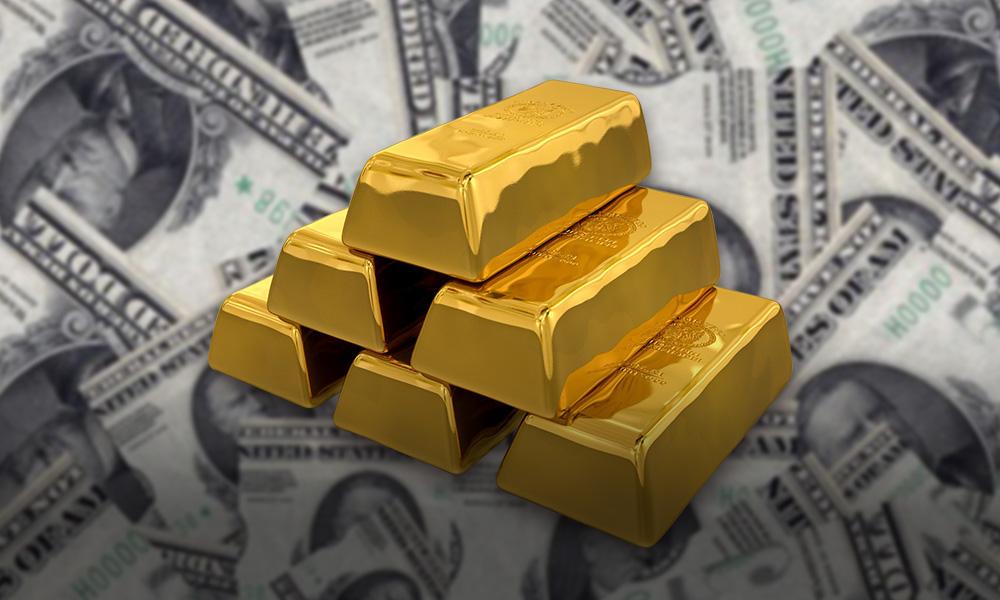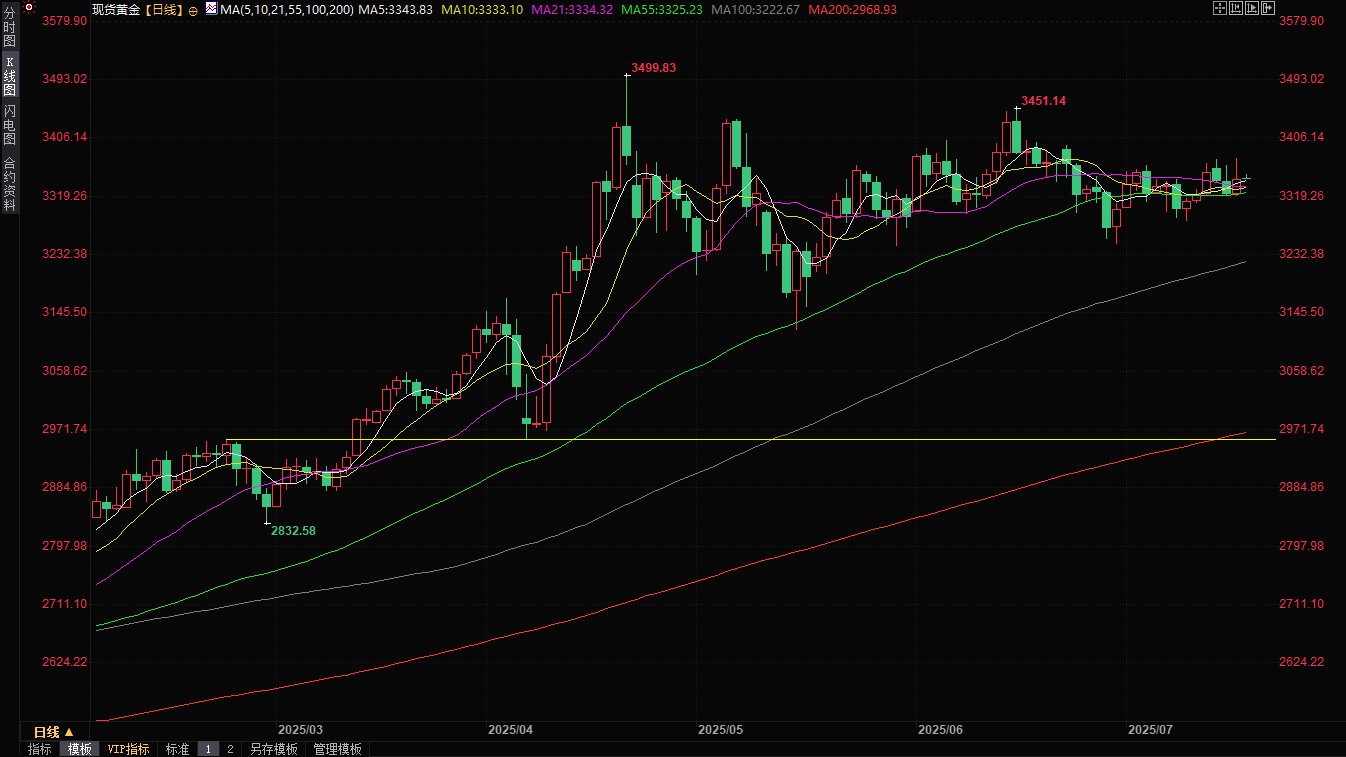Gold trading reminder: Gold price is on a roller coaster of more than $50! Trump's words set off the global market, adding fuel to the Middle East war?
2025-07-17 07:49:09

The Federal Reserve's independence crisis: Trump's "threat game"
US President Trump has long criticized Federal Reserve Chairman Powell. He has repeatedly publicly accused Powell of not cutting interest rates in a timely manner and regarded high interest rate policies as an obstacle to economic development. On Wednesday, a Bloomberg report that Trump might fire Powell quickly detonated the market, causing the US dollar index to fall sharply from a nearly three-week high. The US stock market fell 0.8% at one point, while the price of gold rose sharply by more than $50 driven by risk aversion, hitting a nearly three-week high of $3,377.17 per ounce. However, Trump subsequently issued a statement, making it clear that he did not intend to fire Powell, although he still retained a vague attitude of "any possibility" and pointed the finger at the so-called "overspending" problem of the $2.5 billion renovation project of the Federal Reserve's Washington headquarters. This clarification narrowed the gains in gold prices, and it finally closed at $3,347.38 per ounce, up 0.68%.
Daniel Ghali, commodity strategist at TD Securities, pointed out that Trump's repeated statements caused gold prices to fluctuate sharply in a short period of time, and the market's concerns about the independence of the Federal Reserve became an important driving force for the rise in gold prices. Although Trump downplayed the possibility of firing Powell, his continued pressure on the Federal Reserve still made investors highly vigilant about policy uncertainty.
Senator Thom Tillis spoke on the Senate floor, stressing that the independence of the Federal Reserve is vital to the credibility of the U.S. financial system, and that any attempt to place it under the direct control of the president could trigger a violent market reaction. This uncertainty supports the safe-haven nature of gold, and in the short term, gold prices may continue to be driven by news from the Federal Reserve.
The delicate relationship between the Fed's policy outlook and gold prices
The Federal Reserve's monetary policy has always been one of the core factors affecting gold prices. Trump's criticism of Powell mainly focuses on the issue of interest rates. He believes that the current interest rate level is too high and advocates that it should be reduced to 1% or even lower. However, Federal Reserve Chairman Powell has repeatedly stated that he will complete his term and emphasize the independence of monetary policy. The latest opinion of the Supreme Court also further clarified that unless there is "legitimate reason", the president has no right to fire the Federal Reserve Chairman due to policy differences, which provides legal protection for the stability of Powell's position.
At the same time, New York Fed President Williams said in a recent speech that the current moderately restrictive monetary policy is appropriate, and the Fed will decide on the next move after observing economic data. He expects economic growth to slow to around 1% this year, the unemployment rate to rise to 4.5%, and the inflation rate may rise by about 1 percentage point in the second half of the year and the first half of next year due to tariffs. This expectation of upside risks to inflation has increased the market's probability of a Fed rate cut in September from 54% to 60%, although some policymakers believe that inflation caused by tariffs may be temporary. This policy divergence provides a complex but bullish backdrop for gold prices, as inflation expectations typically weaken the attractiveness of the dollar, pushing up gold prices.
Producer price data unexpectedly mild
The US producer price index (PPI) was flat month-on-month in June, lower than the market's expected 0.2% increase, and the core PPI also performed steadily. This is in contrast to the 0.3% increase in May, showing that the weakness in service prices has offset the increase in commodity prices caused by import tariffs to a certain extent. This data provides support for gold prices, as mild inflation data eases market concerns about the Fed's immediate tightening policy. However, the PPI rose 2.3% year-on-year in June, still showing some inflationary pressure, coupled with the impact of Trump's tariff policy, inflation may rise further in the coming months.
The Fed's Beige Book further revealed the broad impact of tariffs on the economy. Companies reported that cost pressures caused by tariffs are pushing up prices, and some industries have adjusted prices in advance to cope with possible future fluctuations. This inflation expectation provides a long-term positive for gold, as gold is generally seen as an effective tool to hedge inflation. In addition, the Beige Book pointed out that the loss of immigrant labor and uncertainty in trade policies have caused companies to postpone hiring and investment decisions, which may further drag on economic growth and add momentum to the safe-haven demand for gold prices.
The impact of US dollar and bond market volatility
The dollar index fell 0.25% to 98.34 in choppy trading on Wednesday, partly because Trump's denial of reports that he fired Powell eased market concerns about the dollar's credibility. However, the dollar fell 0.7% against the yen, while the euro rose to $1.1633 against the dollar, showing that market confidence in the dollar has not yet fully recovered. Juan Perez, senior trading director at Monex USA, warned that any move to weaken the independence of the Federal Reserve could hit the dollar's safe-haven status hard, further pushing up gold prices.
The U.S. bond market was also hit by rumors about Powell's stay or departure. The 30-year Treasury yield hit an eight-week high of 5.08% and fell to 5.014% in late trading. The two-year Treasury yield fell to 3.889%, and the 10-year Treasury yield also fell from a high of more than a month to 4.466%. The yield spread between the two-year and ten-year Treasury bonds widened to 61.8 basis points, reflecting market concerns about long-term inflation and fiscal deficits. The decline in U.S. Treasury yields provided support for gold prices.
Geopolitical risks fuel safe-haven demand
Geopolitical uncertainty has always been an important support for gold as a safe-haven asset. Recently, Israel launched a fierce airstrike on the Syrian capital Damascus, causing damage to the Syrian Ministry of Defense building and an attack near the presidential palace. This incident has exacerbated tensions in the Middle East, and market concerns about geopolitical risks have rapidly heated up, boosting gold's safe-haven buying. Historically, conflicts in the Middle East have often driven up gold prices as investors tend to transfer funds to safe assets to avoid uncertainty. Although the specific impact of this airstrike is still being evaluated, its short-term support for gold prices is obvious.
Global trade frictions exacerbate market unrest
Trump's trade policy has further injected uncertainty into the gold market. He threatened to impose a 30% tariff on EU imports and planned to send tariff letters to more than 150 countries with a unified tariff rate of 10% or 15%. This policy not only disrupted the global trade pattern, but also raised market concerns about inflation and economic growth prospects. The EU has said it is ready to impose retaliatory tariffs on US$84.1 billion worth of US goods, including Boeing aircraft, bourbon whiskey and automobiles. The trade war has cast a shadow over global markets, prompting investors to seek safe-haven assets such as gold to hedge against potential economic turmoil.
For example, ASML, a global supplier of chip manufacturing equipment, lowered its growth forecast for 2026 due to tariff uncertainty, and its stock price plummeted 11%, reflecting the market's sensitivity to trade frictions. German Finance Minister Klingbeil warned that Trump's tariff policy poses a threat to both the US and European economies and may lead to further tensions in the global supply chain. This uncertainty provides additional upward momentum for gold, as investors tend to increase their allocation to gold when faced with the risk of inflation and economic slowdown that may be caused by trade wars.
Outlook for the future: Gold’s “triple game”
The future trend of gold prices will depend on three major variables:
Trump’s policy risks: If he continues to attack the Federal Reserve or escalates the trade war, gold’s safe-haven properties will be strengthened.
Middle East situation: The risk of spillover from the Syrian conflict may stimulate a new round of buying.
Economic data: If the July economic data shows that the US economy is severely affected by tariffs, expectations of a Fed rate cut may increase, and gold may usher in a new round of increases.
Summary: Gold is currently in a triple positive situation of "policy uncertainty + geopolitical risk + inflation expectations", but we need to be wary of the risk of a correction caused by Trump's sudden "change of heart" or economic data exceeding expectations. Short-term resistance is in the 3370-3380 range, and if it breaks through, it may challenge the 3400 psychological barrier; the support below is in the 3310-3320 area. Investors can pay attention to the breakthrough direction of the 3340-3380 US dollar range, and the medium and long term is still mainly based on bargain hunting.

(Spot gold daily chart, source: Yihuitong)
At 07:46 Beijing time, spot gold is trading at $3,346.50 per ounce.
- Risk Warning and Disclaimer
- The market involves risk, and trading may not be suitable for all investors. This article is for reference only and does not constitute personal investment advice, nor does it take into account certain users’ specific investment objectives, financial situation, or other needs. Any investment decisions made based on this information are at your own risk.










